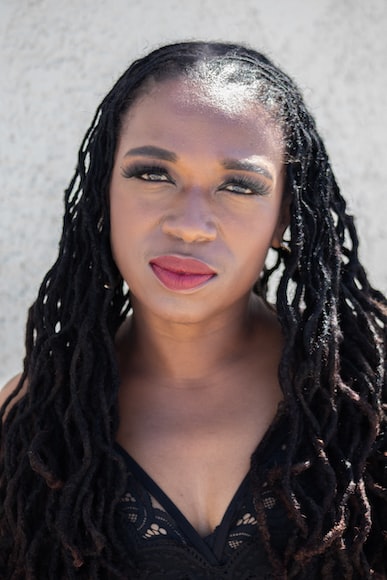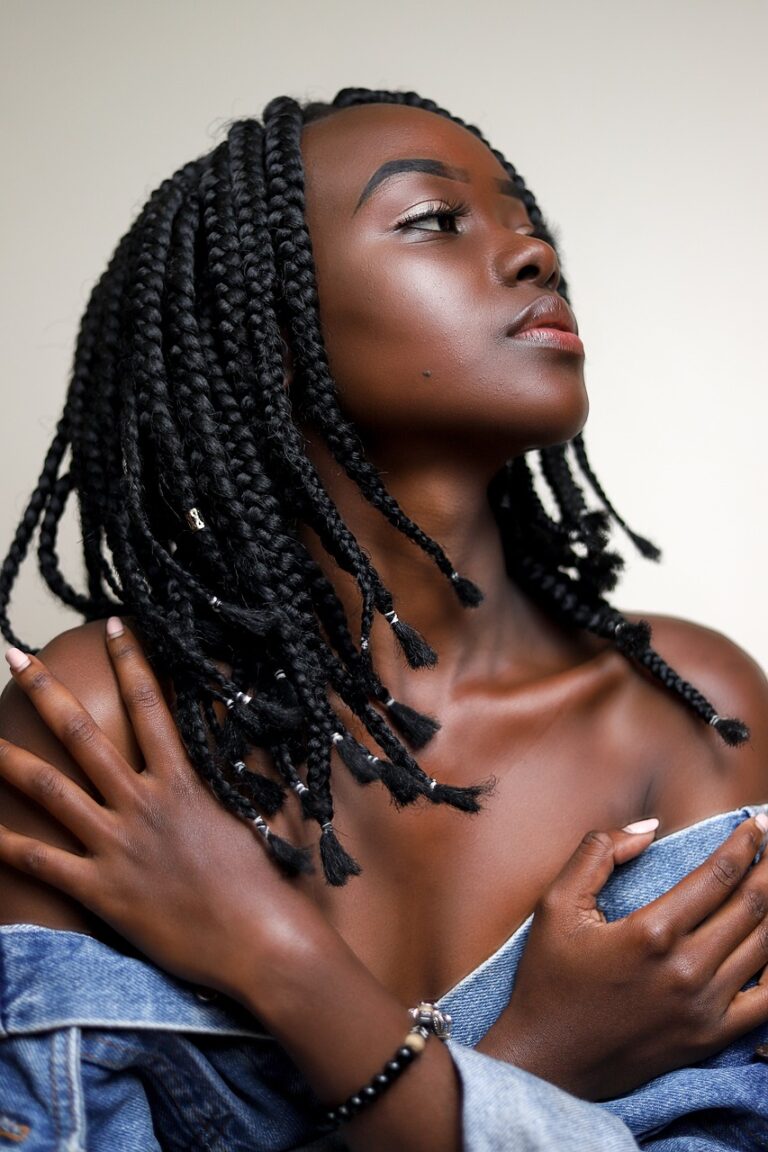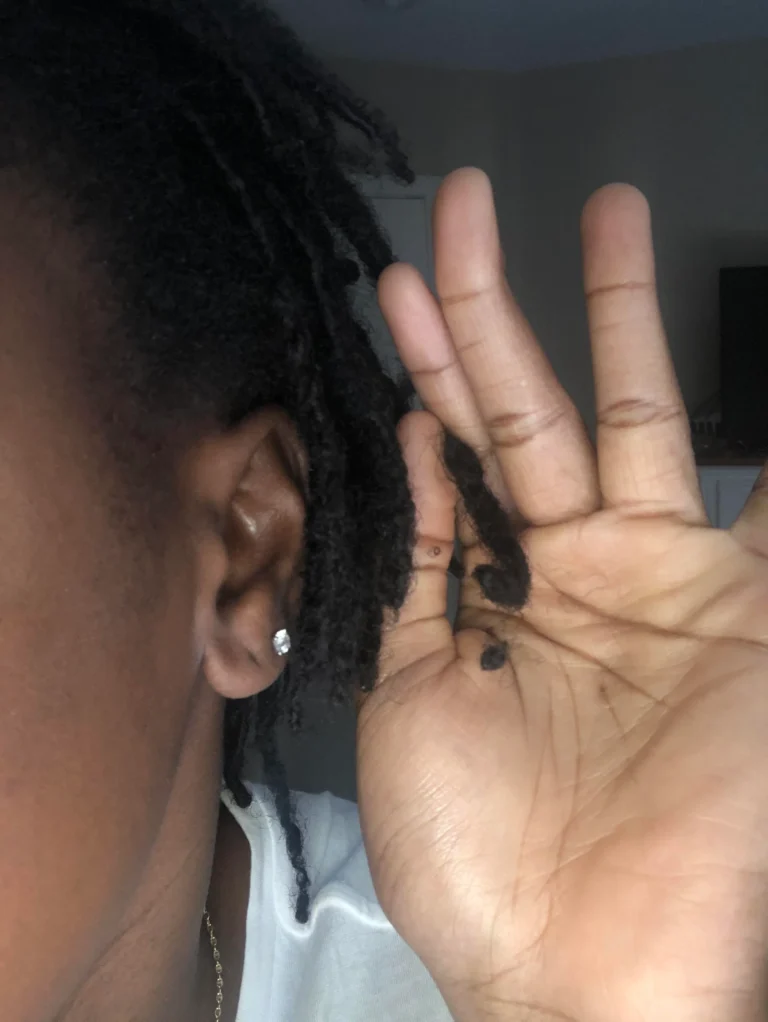Bunching in Sisterlocks: Causes, Prevention and Solution

It is frustrating and painful to have bunching in your sisterlock, especially if you’ve given your precious time and effort to maintain it.
If you’re dealing with bunching in sisterlock, you’re not alone. It is a common problem that can be resolved with the right care and attention.
In this article, you’ll discover what is bunching, what causes bunching in sisterlock, and how to get rid of them.
Bunching occurs when hair in loc roped together at one point, usually at end, which makes it lumpy and uneven.
It can occur anywhere in loc, but is usually found at the end. If you’ve fat end in your loc, know that you’re having a bunching problem.
Ideally, you should have a loc that is uniform in size from the root to the end. But, these can cause bunching in sisterlocks:
- Your loctician may not have used enough tension during retightening.
- Poor locking technique
- Too big loc are more prone to bunching
- Loc can unravel and tangle causing bunching when not washing them carefully
Bunching vs Budding
Budding is one of the different stages of loc. In this stage, your hair will not unravel when you was it. You will also notice new growth which feels fluffy. Usually, it occurs after 6 to 12 months in the locing journey.
In this state, you need to start retwisting your lock to maintain style and health.
But, budding is caused by lack of maintenance, faulty technique, and vigorous washing. It is a problem that you should avoid for the health and look of your loc.
Is bunching a bad sign and why avoid it?
Bunching not only makes loc look ugly and messy, but it is also not good for the health of hair. It creates a strain on hair follicles and can damage them.
To maintain the overall health and appearance of the lock, you need to get rid of it.
How to deal with bunching in sisterlocks?
You need to remember that everyone’s hair is different. Solutions that work for one may not work for another. You need to work with a different strategy and find out what works best for you.
That being said, here are different ways to deal with bunching in sisterlock:
- The easiest and most advised solution is to cut off the end of your loc. By cutting the hair, you will get rid of tangled and matted portions of the lock. If you have severe bunching, cut your hair and start fresh.
- Locate the center of the coiled loop, put the end of a rat tail comb in the epicenter of bunching, and then pull downward.
You will also find that some people advise letting bunching disappear without doing anything. The theory is bunching will disappear on its own as loc continues to grow and mature.
It is easy to say that, but if you are having a problem with bunching and it is painful to you, I advise you to visit your loctician and find a better solution together which is right for you, as your hair is different from others.
How to avoid it? (Prevention)
One of the best ways to deal with the problem is to prevent it from happening. To avoid bunching in your sister lock, you need to
- Wash your hair carefully. Use the right product and avoid vigorous washing that causes tangling or bunching.
- Make a routine for regular twisting, braiding, and banding. This will maintain the uniformity of your locks.
- Trimm the end of your lock regularly to remove any tangled or matted section.
Should I Braid My Sisterlocks Every Night?

The short answer is no, you do not need to braid your sisterlocks every night.
While it is essential to braid and band sisterlocks before each wash during the first six months of wearing them, doing so every night is not necessary.
Instead, focus on establishing a nightly routine that includes moisturizing, detangling, massaging the scalp, and protecting your locks while you sleep.
Why You Need to Braid Sisterlocks (Benefits)
Braiding sisterlocks provides numerous benefits, especially during the first six months when they are not yet mature.
Here are some reasons why braiding is essential for maintaining healthy sisterlocks:
- Prevents slippage: Braiding keeps the locks secure, preventing them from slipping out of their roots or unraveling at the ends.
- Reduces bunching: By braiding your sisterlocks, you prevent them from roping together, which can cause lumpy and uneven locks.
- Minimizes damage and breakage: Braiding helps to protect your locks from friction and stress, which can lead to damage and breakage over time.
How to Braid Sisterlocks (Best Practice)
To effectively braid your sisterlocks, follow these best practices:
- Start with clean and dry locks: Make sure your sisterlocks are clean and completely dry before braiding to prevent mildew and odor.
- Section your hair: Divide your sisterlocks into sections based on their size and density. This will make the braiding process more manageable and ensure even tension across all locks.
- Braid each section: Hold the base of the lock and gently twist it before braiding it with two other locks. Continue braiding until you reach the end, ensuring that the braid is not too tight, as this can cause tension on the scalp and damage your locks.
- Secure the ends: Use a small rubber band or hair tie to secure the end of the braid. Be sure not to pull too tightly to avoid damaging your locks.
When to Stop Braiding and Banding Sisterlocks
As your sisterlocks mature, you will no longer need to braid and band them as frequently.
Generally, you can stop braiding and banding after the first six months or when your locks have reached full maturity.
At this stage, your locks will be more resilient and less prone to slippage, bunching, and breakage. However, it is still essential to maintain a proper night routine to keep your sisterlocks healthy and vibrant.
What are Flat Locs
Flat locs are dreadlocks that have lost their cylindrical shape and become flattened, often due to pressure, improper maintenance, or a combination of factors.
These locs can occur at any stage of the locking process and may be a temporary or permanent feature of your locs, depending on the cause and your hair care routine.
What Causes Flat Locs

There are several reasons why locs may become flat, including:
- Sleeping on wet or partially dry locs: Wet locs are more prone to flattening when pressed or molded while sleeping. Additionally, wet locs can lead to mildew and odor issues if not dried properly.
- Improper drying techniques: Not using a microfiber towel or air drying your locs with a blow dryer without heat can contribute to flat locs.
- Loc foundation: Creating a rectangular foundation for your locs, instead of a square or diamond-shaped foundation, can result in flat locs as they mature.
How to Fix Flat Locs
If you notice your locs becoming flat early in your loc journey, it is possible to reverse the process, especially if they are not yet fully matured.
Here are some steps to help revert flat locs back to their cylindrical shape:
- Frequent palm rolling and retwisting: Regularly palm rolling and retwisting your locs can help reshape them and encourage a more cylindrical form. Consult with a loctician to assess your locs and provide professional advice on the best course of action.
- Proper drying techniques: Use a microfiber towel or a blow dryer without heat to dry your locs thoroughly after washing. This helps prevent locs from becoming flat due to moisture and pressure.
- Sleep with a silk or satin scarf or pillowcase: Sleeping on a silk or satin surface can help reduce friction and pressure on your locs, preventing them from flattening during sleep.
Will Flat Locs Become Round Naturally
In some cases, flat locs may round out naturally as they continue to mature and lock.
However, this is not always guaranteed, and proper maintenance, palm rolling, and retwisting may be necessary to achieve a more rounded shape.
Flat Starter Locs
If you’re starting your loc journey and want to avoid flat locs, consider the following tips:
- Choose a square or diamond-shaped foundation for your locs to promote a more cylindrical shape.
- Practice proper maintenance techniques, such as regular palm rolling and retwisting, to help maintain a rounder shape.
- Be mindful of your hair care routine, including drying techniques and sleeping habits, to prevent flattening your locs.
Bottom Line
Improper technique, not enough tension during retightening, long loc, lack of maintenance, and vigorous washing are some of the causes of bunching in sisterlock.
If you have a bunching in your loc, it is not always your fault. Your locitician and poor technique might be the cause of bunching. So, don’t be too hard on yourself.
Bunching can be overcome and prevented. Ask for the help of the consultant to find a perfect solution for you as you have hair different from others.






